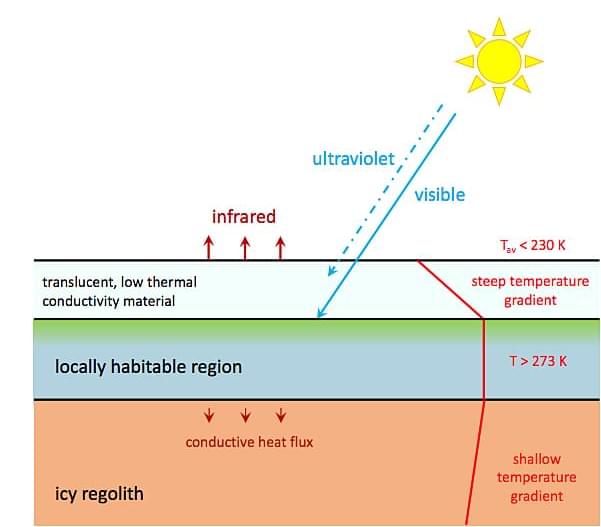The low temperatures and high ultraviolet (UV) radiation levels at the surface of Mars today currently preclude the survival of life anywhere except perhaps in limited subsurface niches.
Several ideas for making the Martian surface more habitable have been put forward previously, but they all involve massive environmental modification that will be well beyond human capability for the foreseeable future. Here we present a new approach to this problem. We show that widespread regions of the surface of Mars could be made habitable to photosynthetic life in the future via a solid-state analogue to Earth’s atmospheric greenhouse effect.
Specifically, we demonstrate via experiments and modelling that under Martian environmental conditions, a 2 to 3-cm thick layer of silica (SiO2) aerogel will simultaneously transmit sufficient visible light for photosynthesis, block hazardous ultraviolet radiation, and raise temperatures underneath permanently to above the melting point of water, without the need for any internal heat source. Placing silica aerogel shields over sufficiently ice-rich regions of the Martian surface could therefore allow photosynthetic life to survive there with minimal subsequent intervention.









Comments are closed.